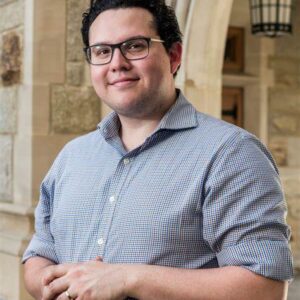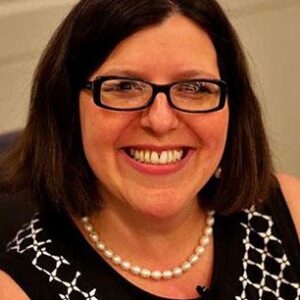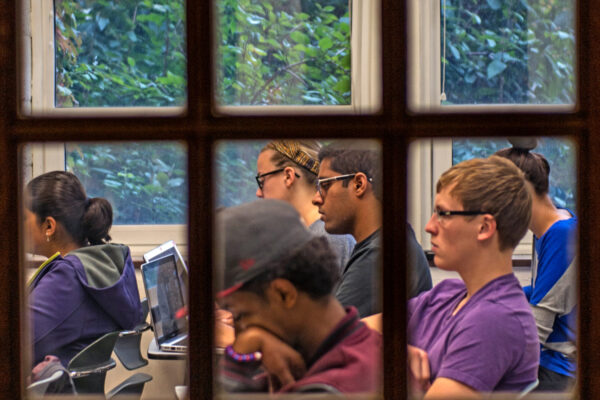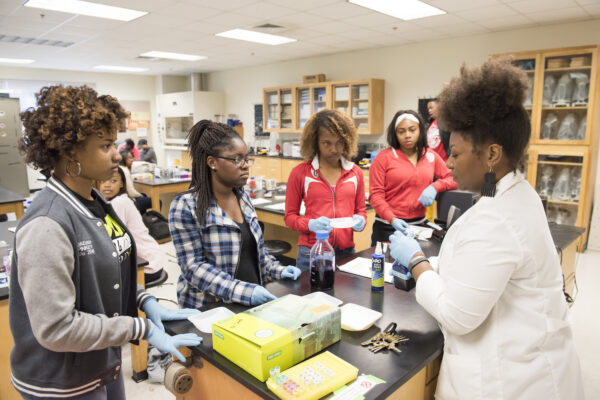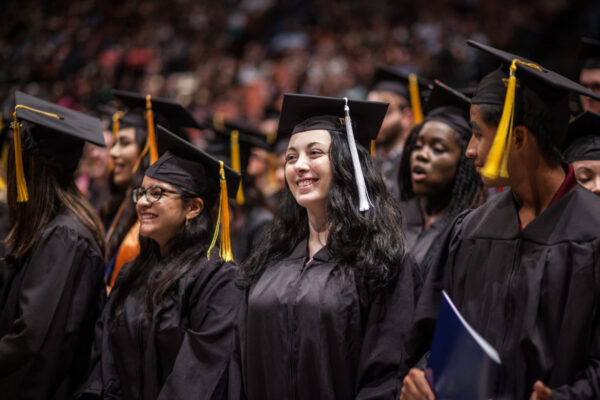By Marybeth Gasman & Andrés Castro Samayoa
This blog is part of a series highlighting the findings from Pulling Back the Curtain: Enrollment and Outcomes at Minority Serving Institutions.
HBCUs play a critical role in the nation’s postsecondary education system: They offer African Americans and other students of color safe and empowering environments and provide students a space to embrace their racial identities. HBCUs offer a uniquely familial learning environment; moreover, they cultivate and measure student success in myriad ways.
As we know, HBCUs not only have a long history of providing access to African Americans seeking postsecondary education, but they also contribute to the educational success of a large number of students of color. Research shows that while representing less than 3 percent of higher education institutions nationally, HBCUs educate one in 10 black students.
HBCUs also have robust histories of providing access and support for disadvantaged students who come from under-resourced K–12 backgrounds. Currently, 74 percent of HBCU students are Pell Grant-eligible, exemplifying their commitment to serving low-income students. The contributions of HBCUs to STEM education are particularly noteworthy, with eight HBCUs among the top 20 institutions that award science and engineering bachelor’s degrees nationwide. Further, research shows HBCUs as leaders in producing black graduates who go on to earn STEM doctoral degrees.
Enrollment and Outcomes at HBCUs
ACE’s Center for Policy Research and Strategy recently released a one-of-its-kind report, Pulling Back the Curtain: Enrollment and Outcomes at Minority Serving Institutions, which uses data from the National Student Clearinghouse (NSC) to examine enrollment and outcomes of students who start college at a minority serving institution, including HBCUs.
Findings showed that the majority of students at public two-year and four-year HBCUs attended through mixed enrollment (65 and 52 percent, respectively), meaning they move between full-time and part-time enrollment. Students at private four-year HBCUs were more likely to enroll exclusively full time (56 percent); however, many students (43 percent) used mixed enrollment. This means that the majority of students who attend public HBCUs, and over one-third who attend private HBCUs, do not fit the profile of students captured by traditional graduation rates—those who enroll full time.
Looking at completion, students at HBCUs complete at higher rate than what the federal graduation rate suggests. Examining data for students who enroll at HBCUs exclusively full time—the NSC sub-cohort most comparable to the cohort used to calculate the federal graduation rate—the total completion rate is higher than the federal rate across all sectors. This is because NSC data capture students as they move across institutions and states, providing a more robust picture of student outcomes. Analyzing NSC data, the authors of the report found:
- Exclusively full-time students at public four-year HBCUs complete at a rate of 61.8 percent, slightly less than double that of the federal graduation rate for these institutions, 34.1 percent.
- Students enrolled exclusively full time at private four-year HBCUs had a completion rate of 66.7 percent, compared to the federal rate of 43.9 percent.
- The NSC four-year completion rate for students enrolled exclusively full time at two-year public HBCUs is more than double that of the federal rate—32.1 percent using NSC data compared to 13.9 percent using federal data.
Beyond the Numbers: Student Success at HBCUs
Student success at HBCUs can be attributed to multiple factors, including how HBCUs cultivate an ethos of familial success and provide robust services for students hailing from low-income and other under-resourced backgrounds. Research shows that HBCUs purposefully foster an ethos of belief in the success of students, and faculty and staff members regularly and consistently communicate this vision to their students.
HBCUs’ ethos of success is steeped in the idea of family. Many of these institutions emphasize collaboration over competition through cohort models in which students understand that their success is deeply tied to others and not merely a product of their own doing. For example, one strategy of success used at Morehouse College (GA) is a focus on effective peer-to-peer learning within a cohort model, where students are charged with supporting one another in completing their degrees. Notably, the students who are encouraged to participate as leaders in these cohort groups may have initially struggled in their own coursework. This allows peer leaders to see themselves in those seeking guidance, and also allows struggling students to recognize and aspire to the success of those who came before them.
The success of Morehouse’s initiatives—inviting students to share in their collective achievement—is evident in the college’s production of future STEM graduate students. The college stands out as an exemplary institution in STEM education for black men, an important contribution given that across the nation, only 34 percent of black recipients of STEM bachelor’s degrees are men. Additionally, Morehouse is one of the nation’s top producers of black STEM graduates pursuing master’s and doctoral degrees.
At Xavier University of Louisiana, students are encouraged to work together in weekly drills as part of their chemistry courses. Faculty members demonstrate to students that, rather than working on their own and competing with one another, working in groups and caring about each other’s performance will lead to greater student success overall. Like Morehouse, Xavier has an impressive track record in producing future STEM doctorate-holders as well as medical doctors, regularly sending over 100 students to medical school in a given year.
HBCUs pride themselves on offering students ample time for face-to-face interaction with faculty and staff, who support students both academically and socially. Consider Paul Quinn College, a private HBCU in Dallas, which anchors its academic and community work through its “We Over Me” philosophy. Michael Sorrell, Paul Quinn’s president since 2007, has instilled this motto as a moral compass on campus: A sense of success that spans beyond individual accolades, fostering a shared ownership over everyone’s triumphs. Sorrell not only serves as the institution’s leader but also teaches first-year students and personally recruits students to Paul Quinn during nationwide visits to high schools. Throughout all of these forms of engagement, Sorrell instills in students a commitment to intentionally serve beyond themselves. Since Sorrell came to Paul Quinn with his emphasis on service, the college has been producing activist leaders who give back to their broader community.
HBCUs place emphasis on ensuring that students’ academic and social needs are met in order to further develop their competencies and readiness for college-level coursework. A summer bridge program at Norfolk State University (VA), for example, pairs incoming and current students, whereby the latter provides mentoring, academic, and social support and helps keep new students accountable throughout the transition to college. Summer bridge students also have the option of joining a program called “The Breakfast Club” in their first year. The Breakfast Club program nurtures new students’ social skills and prepares them as professionals, complementing and building upon their academic preparation.
HBCUs are also attuned to the specific needs of students whose trajectories do not follow the traditional, first-time, full-time residential collegian. Many students enrolled at HBCUs have to leave their education for periods of time in order to tend to other needs, such as work and family. HBCUs embrace approaches that capitalize on the assets that students returning to college after an extended absence possess. Such progress is not captured by traditional graduation rates. Without taking into account students’ specific educational backgrounds prior to beginning their trajectories at HBCUs, policymakers can often forget how HBCUs successfully continue to serve groups of students that might otherwise not pursue postsecondary education at all.
By embracing expansive ideas of success, HBCU leaders inspire their students to strive beyond degree completion and understand how collaboration, civic engagement, and entrepreneurship are essential attributes in a new knowledge economy and global citizenry. These are difficult qualities to capture through traditional metrics of student success but important when evaluating HBCUs. Not doing so risks ignoring HBCUs’ unique mission, storied history, and role in our country’s educational future.
If you have any questions or comments about this blog post, please contact us.
